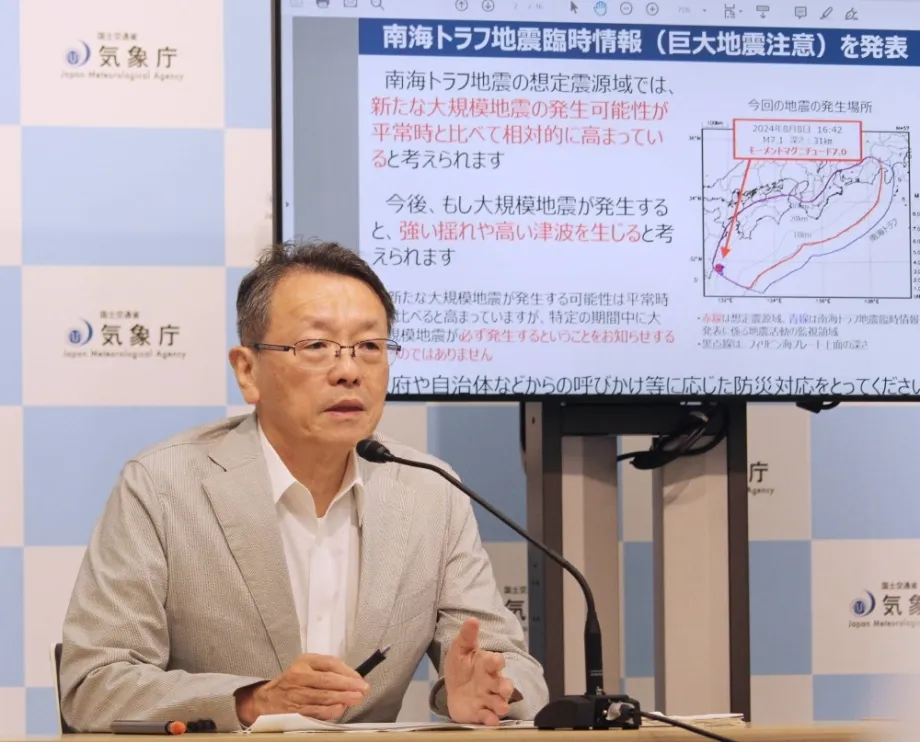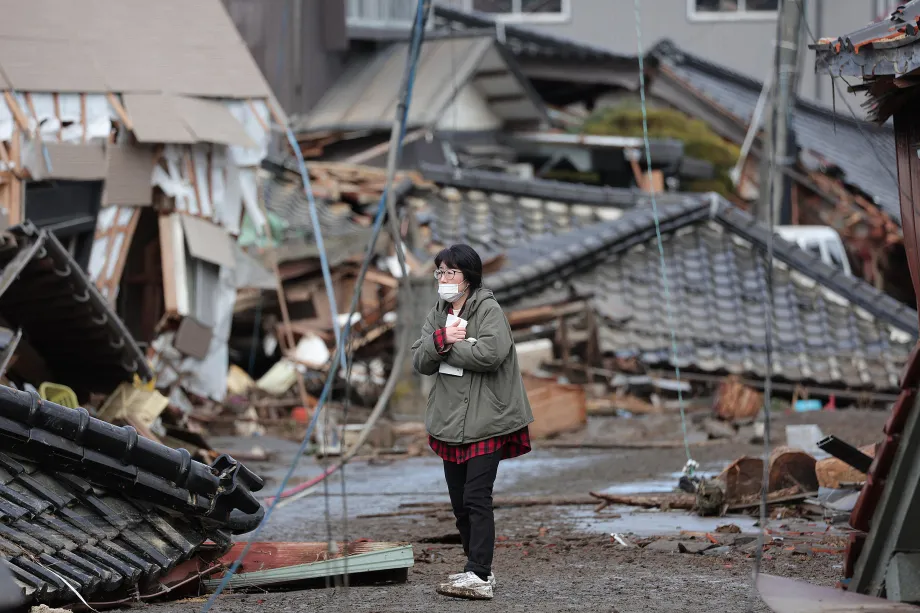
Japan Issues Warning of Potential Megaquake
Tokyo has issued a warning that the risk of a megaquake in the Nankai Trough has “increased several times” above normal levels, following a powerful 7.1 magnitude earthquake in the southwest.
Just hours after the 7.1 magnitude earthquake shook southwestern Japan on the afternoon of August 8, the Japan Meteorological Agency (JMA) issued a warning about an elevated risk of a megaquake around the Nankai Trough, an underwater trench running along the Pacific coast. This is the first time such a warning has been issued.

The Japanese government had previously estimated a 70-80% chance of a megaquake, measuring between 8 to 9 on the Richter scale, occurring along the Nankai Trough within the next 30 years. In the worst-case scenario, the megaquake could shake a vast area from Kanto to Kyushu, triggering a tsunami that could submerge coastal regions from Kanto to Okinawa, with potential casualties reaching up to 323,000.
Naoshi Hirata, head of the JMA advisory body, stated that the likelihood of a megaquake has now “increased several times.” However, the JMA emphasized that “this does not mean a large earthquake is certain to occur.” The agency’s warning does not advise people to evacuate but urges them to remain vigilant for about a week. “We cannot predict exactly which areas should be prepared to respond, but everyone must be cautious in the face of any potential scenarios,” Hirata said.
The Nankai Trough, approximately 800 km long, is where the Eurasian and Philippine Sea tectonic plates meet. Major earthquakes occur in the Nankai Trough roughly once every 100 years, but the exact timing cannot be predicted.

Historically, earthquakes in this trench have caused significant damage, the most recent being on December 21, 1946, which generated a large tsunami and resulted in 1,330 deaths. Prime Minister Fumio Kishida canceled his planned visit to Central Asia, scheduled from August 9-12, following the information from the JMA.
The JMA established a warning mechanism related to potential megaquakes in the Nankai Trough in 2017. This mechanism is activated when tremors exceeding 6.8 in magnitude occur in areas at risk of a megaquake or when abnormal geological movements are detected.
Japan is one of the most seismically active countries in the world. Four of the Earth’s major tectonic plates converge beneath Japan, and earthquakes frequently occur along the fault lines between these plates. The island nation also sits on the “Ring of Fire,” a chain of volcanoes and seismic activity zones around the Pacific Ocean, causing Japan to experience about 18% of the world’s annual earthquakes.
Japan’s Ministry of Disaster Management reported that about 10 people were injured and several structures were damaged following the 7.1 magnitude earthquake in southern Japan on August 8.



